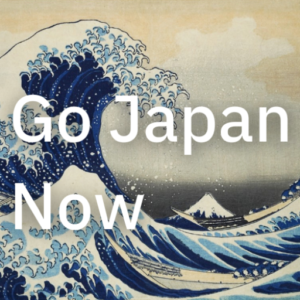- A Brief Journey Through Japan's Fascinating History
- 1. Ancient Japan: Mythology & Foundations (Pre–710)
- 2. The Classical Era: Nara & Heian Periods (710–1185)
- 3. Feudal Japan: Samurai & Shoguns (1185–1603)
- 4. Edo Period: Peace & Isolation (1603–1868)
- 5. Meiji Restoration & Modernization (1868–1945)
- 6. Postwar Japan: Recovery to Global Power (1945–Present)
- Why History Matters for Visitors
- Related Cultural Guides
A Brief Journey Through Japan's Fascinating History
Japan’s history is a rich tapestry woven from emperors, warriors, isolation, innovation, and resilience. Understanding this backdrop not only deepens your appreciation for temples and castles but also explains much about modern Japanese society.
1. Ancient Japan: Mythology & Foundations (Pre–710)
According to legend, Japan was founded by Emperor Jimmu, a descendant of the sun goddess Amaterasu. Early societies developed rice cultivation, metallurgy, and clan-based governance. Shintoism began shaping cultural identity.
2. The Classical Era: Nara & Heian Periods (710–1185)
The capital shifted to Nara and later Kyoto. Buddhism and Confucianism arrived from China and Korea, influencing art, politics, and architecture. The Heian Period birthed Japan’s literary masterpiece, The Tale of Genji.
3. Feudal Japan: Samurai & Shoguns (1185–1603)
Military rule emerged under the Kamakura shogunate. The samurai class rose, living by the bushidō code. Castles, tea ceremonies, and Zen Buddhism flourished. Civil wars dominated the 15th century, ending with national unification.
4. Edo Period: Peace & Isolation (1603–1868)
Under Tokugawa rule, Japan enjoyed over 250 years of peace. The country closed its borders, fostering unique art forms like ukiyo-e and kabuki. Society was strictly hierarchical. Learn more about cultural norms from this era:
5. Meiji Restoration & Modernization (1868–1945)
Japan reopened to the world and rapidly modernized. Railways, industry, and education systems transformed society. The nation became a military power but faced devastation during World War II.
6. Postwar Japan: Recovery to Global Power (1945–Present)
After WWII, Japan rebuilt into an economic powerhouse. It blended tradition with innovation, leading in technology and design. Today’s society reflects both historical continuity and modern evolution.
Why History Matters for Visitors
- 🗺️ Temples, shrines, and castles carry historical stories
- 🧠 Social behaviors trace back to feudal and Confucian roots
- 📖 Understanding history enriches travel experiences
Related Cultural Guides
-
Japanese Culture & Values
-

-
1-1-1Japanese Culture & Core Values Explained for First-Time Travelers
Contents Understanding Japanese Culture & Core ValuesHarmony (Wa): The Heart of Japanese SocietyRespect for Others: 礼儀 (Reigi)Group-Oriented ThinkingConcepts That Define JapanSeasonal Appreciation & Nature ReverenceMinimalism & AestheticsLanguage as a Mirror of CultureWhy Culture Awareness MattersNext, Learn More About:Understanding Japanese Culture & Core Values Japan's culture is a harmonious blend of ancient traditions and modern sensibilities. Rooted in respect, community, and subtlety, these values influence everything from daily interactions to national holidays. Understanding them will greatly enhance your travel experience. Harmony (Wa): The Heart of Japanese Society At the center of Japanese values is Wa, the principle of harmony. It shapes ...
-
-
Etiquette & Manners in Japan
-

-
1-1-3Essential Japanese Etiquette for First-Time Visitors: What You Need to Know
Contents Essential Japanese Etiquette for First-Time Travelers1. Greetings: The Art of Bowing2. Shoes On or Off? Know the Zones3. Public Behavior: Keep It Quiet4. Dining Etiquette5. Onsen (Hot Spring) Etiquette6. Gifting & Payment Etiquette7. Nonverbal CuesReady to Dive Deeper?Essential Japanese Etiquette for First-Time Travelers Knowing the proper etiquette in Japan isn't just polite—it's key to a smooth, respectful, and enjoyable trip. From bowing and shoes to quiet trains and cash handling, here’s what every traveler should understand before arriving. 1. Greetings: The Art of Bowing Shaking hands is rare. Bowing is the traditional form of greeting, expressing respect and humility. ...
-
-
Religion & Spirituality
-

-
1-1-4Religion & Spirituality in Japan: Shinto, Buddhism, and Cultural Traditions
Contents Religion & Spirituality in Japan: A Guide for Curious Travelers1. Shinto (神道): The Indigenous Belief2. Buddhism: A Path of Enlightenment3. Daily Spiritual Practices4. Seasonal Festivals with Spiritual Roots5. Religion in Daily LifeTravel Tips for Spiritual SitesRelated Cultural GuidesReligion & Spirituality in Japan: A Guide for Curious Travelers Japan’s religious landscape is unique—less about strict doctrine and more about rituals, seasonal customs, and quiet spirituality. Shinto and Buddhism are the main religions, but most Japanese people don't consider themselves "religious" in the Western sense. Instead, they live in a culture deeply influenced by spiritual traditions. 1. Shinto (神道): The Indigenous ...
-
→ Next, explore how Japanese manners reflect centuries of cultural evolution in Etiquette & Manners in Japan.



